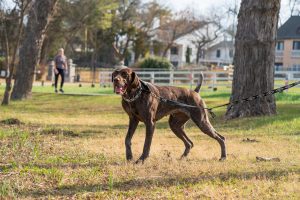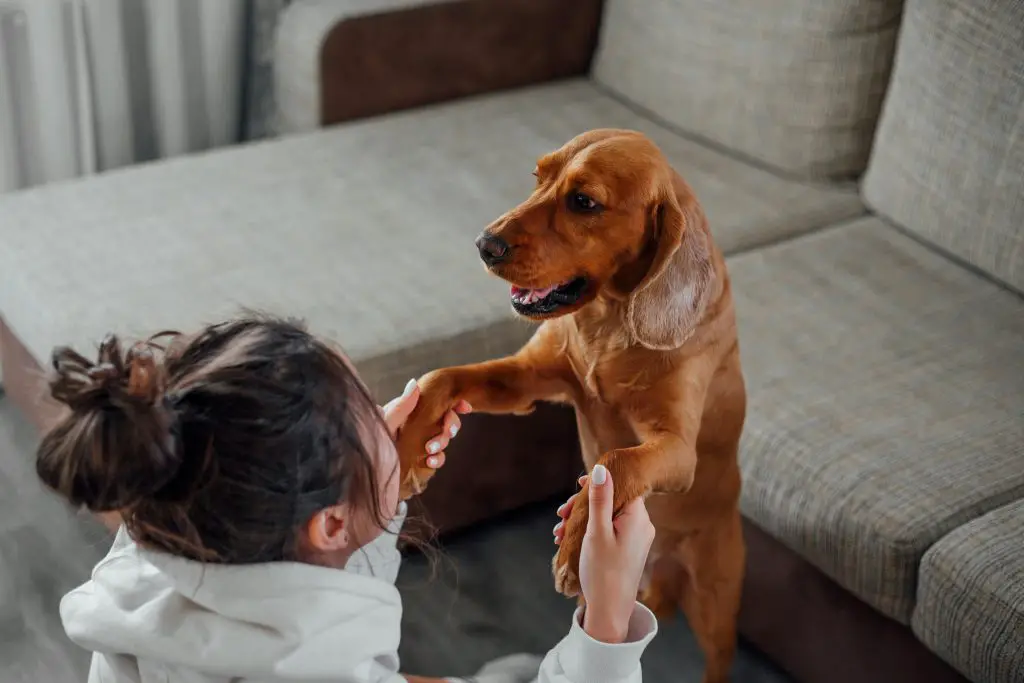
To train your dog to stay off the couch, start by establishing clear boundaries. Designate specific areas for your dog to relax, like a cozy dog bed, and make sure everyone in your household enforces the same rules. Use consistent commands such as ‘off’ every time they jump on the couch. Reward your dog with treats or praise when they comply. You can also try scent-based repellents or sound aversion techniques to discourage couch-sitting. Patience and repetition are key.
Continue to track progress and adapt your strategy as needed to maintain consistency and results.
Discover more techniques that ensure a comfortable, couch-free environment for your furry friend.
Table of Contents
Key Takeaways
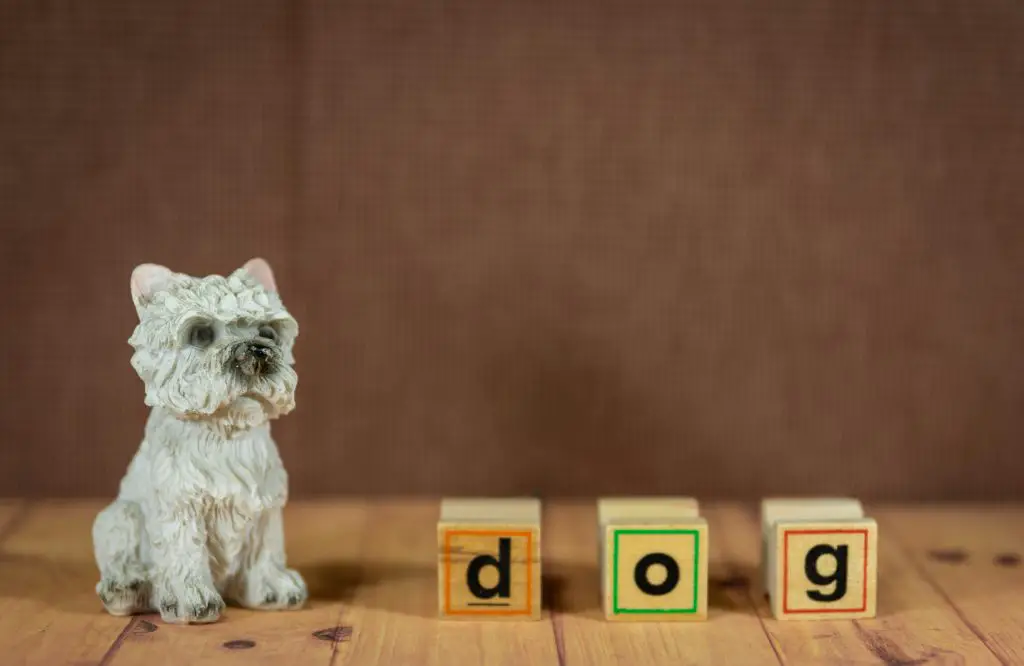
- Consistently use commands like ‘off’ or ‘down’ and reward your dog for obeying. Establish clear boundaries and provide designated areas like dog beds for relaxation.
- Use positive reinforcement techniques, including treats and praise, to encourage preferred behavior. Apply scent-based repellents or sound aversion techniques to deter your dog from the couch.
- Monitor your dog’s progress and adapt training techniques as needed to ensure consistent behavior.
Understanding Your Dog’s Behavior
Understanding why your dog loves the couch is crucial for efficiently training them to stay off it. Your dog’s fondness for the couch often arises from a mix of comfort and social interactions.
This post contains affiliate links. However all the information provided on this site are my own honest opinions. See more in Disclaimer.
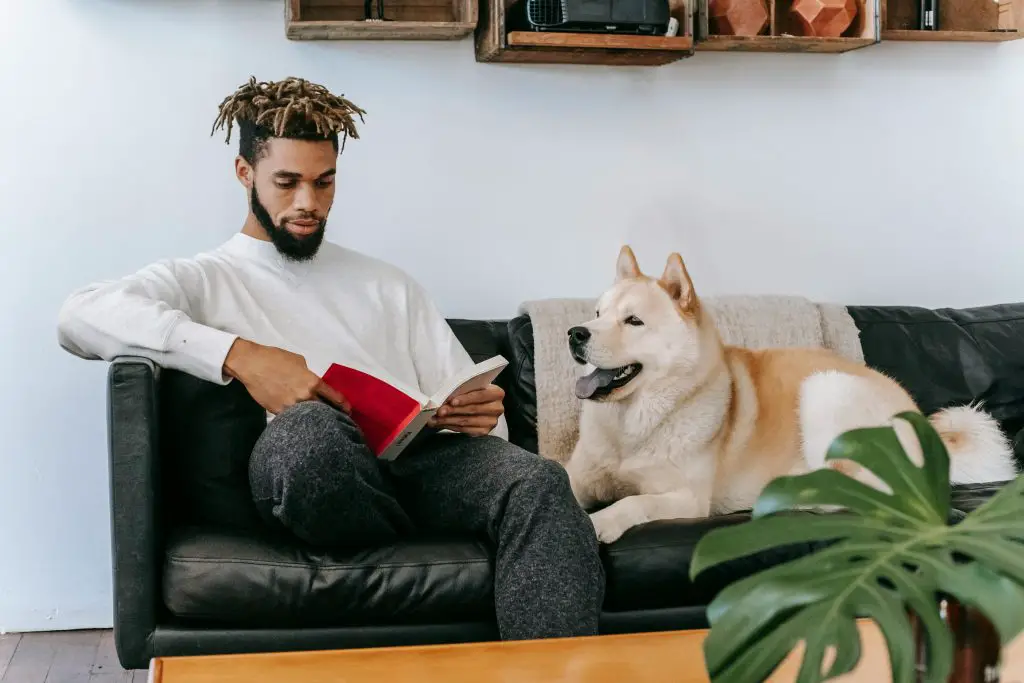
Canine psychology indicates that dogs gravitate towards soft, raised areas because they provide warmth and a feeling of safety.
Moreover, your scent on the couch can offer great reassurance to your dog, strengthening their inclination to claim that spot.
To address this behavior, you need to explore behavioral training techniques. By comprehending your dog’s motivations, you can utilize strategies that accommodate their needs while redirecting their behavior.
Pay close attention to your dog’s body language; it plays a vital role in human-dog communication. Observe how they approach the couch, their stance, and any signs of unease or contentment.
Effective communication entails using consistent cues and reinforcement. When you notice your dog getting ready to leap onto the couch, use a firm yet composed voice to redirect them.
Reward positive behavior with treats and accolades when they opt for a different location. This clear communication aids your dog in understanding expectations, paving the way for successful behavioral adjustments. Also read on 9 Ways To Get Your Dog To Trust And Love You.
Setting Clear Boundaries
Establishing clear boundaries is vital for teaching your dog to stay off the couch effectively. Consistency and clarity are key.

From a behavioral psychology standpoint, dogs thrive on routine and clear expectations.
Start by designating specific areas where your dog is allowed to relax. Use visual cues like dog beds or mats to create a clear distinction between ‘dog-friendly’ areas and the couch.
Your communication skills play a pivotal role in setting these boundaries.
Always use the same gestures and body language to reinforce your rules. For example, if your dog approaches the couch, calmly redirect them to their designated spot.
Guarantee all family members are on the same page to avoid mixed signals. Physical barriers can also help.
Use baby gates or furniture covers to limit access to the couch. If you catch your dog on the couch, gently guide them down and reward them for relocating to their spot.
Positive reinforcement strengthens their understanding of where they should be.
Using Consistent Commands
Consistent commands are crucial for reinforcing boundaries and ensuring your dog understands expectations. Using the same command each time, like ‘off’ or ‘down,’ helps your dog learn faster.
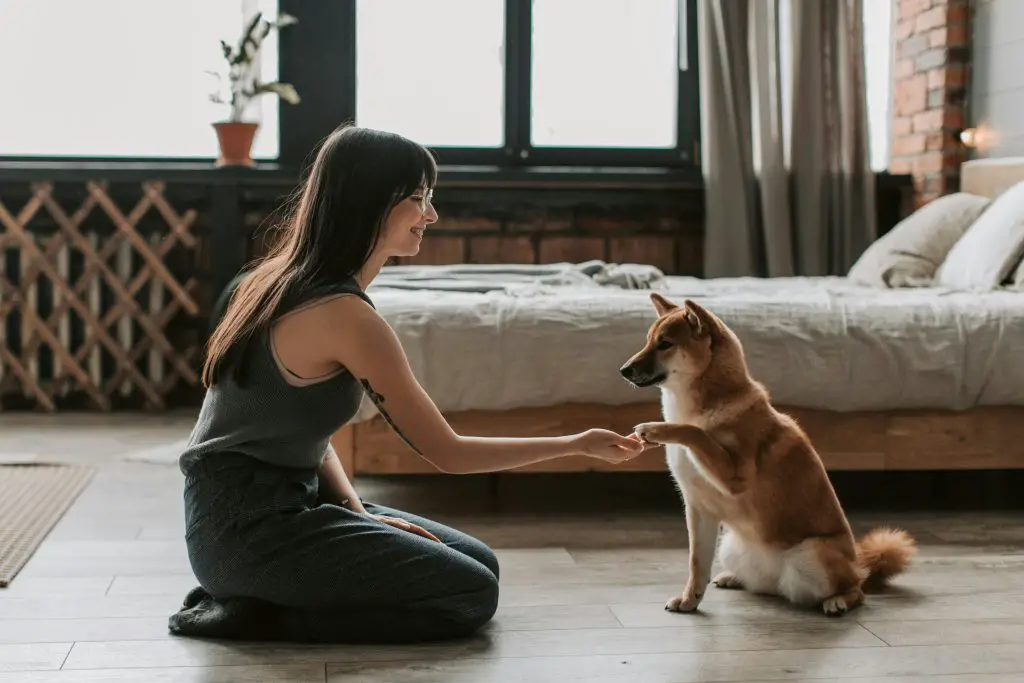
Avoid confusing your dog by staying consistent with your chosen command.
When your dog approaches the couch, firmly and calmly give the command. Ensure everyone in your household uses the same command to prevent mixed signals.
This consistency aids in faster learning, as your dog won’t be confused by different instructions for the same behavior.
Incorporate hand signals or body language along with verbal commands to reinforce your message. Dogs are attuned to physical cues, so combining both can enhance understanding.
Providing rewards, such as praise or treats, when your dog obeys the command to stay off the couch encourages them to repeat the desired behavior.
Positive Reinforcement Techniques
Positive reinforcement techniques, such as using treats or praise, are vital for encouraging your dog to stay off the couch. When your dog obeys the command to stay off, immediately reward them with a treat.

This creates a positive association with the desired behavior.
Consistency is key; always have treat rewards handy to reinforce this behavior every time it occurs. Clicker training is another effective method.
A clicker is a small device that makes a distinct sound when pressed. First, condition your dog by clicking and then immediately giving a treat.
Once your dog associates the click with a reward, use the clicker to mark the exact moment they follow your command to stay off the couch. This precise timing helps your dog understand what behavior is being rewarded.
Always pair the click or treat with verbal praise to strengthen the positive association. Say something like, ‘Good job!’ or ‘Well done!’
Your dog will soon understand that staying off the couch results in positive outcomes. Remember, patience and repetition are essential.
Providing Alternative Comfort Spots
To encourage your dog to choose comfortable and appealing alternative spots over the couch, consider crate training.

A well-furnished crate with soft bedding can offer your dog a cozy and secure place to relax, becoming their favorite retreat.
Additionally, an elevated dog bed with firm support and cooling mesh can provide a comfortable and appealing spot that helps regulate your dog’s temperature.
For creating alternative comfort spots, you can also include a floor cushion with a plush and washable cover for easy maintenance and added comfort.
A dog blanket with a soft texture and familiar scent can provide a sense of comfort and familiarity. See Also 7 Ways To Ease Separation Anxiety In Your Dog.
Setting up a corner nook with your dog’s favorite toys and bed can also offer them a personal space to relax and unwind.
Utilizing Barriers and Deterrents

To keep your dog off the couch, you can use a combination of barriers and deterrents.
Physical blockades can include placing a baby gate in front of the couch or using furniture covers to make the surface less inviting.
Scent-based deterrents like citrus sprays or vinegar can help repel your dog from the couch.
Sound aversion techniques, such as using a pet-friendly ultrasonic device, can also discourage your dog from jumping on the couch.
Physical Blockades
Implementing physical blockades like baby gates or furniture covers can effectively keep your dog off the couch. Physical barriers serve as immediate and clear signals that the couch is off-limits.

Baby gates can block access to the entire room, while furniture covers with textures dogs dislike can make the couch less appealing.
These training aids act as behavioral cues for your dog, reinforcing that the couch is a forbidden zone.
When using physical barriers, consistency is key. Make sure that the barriers are in place whenever you’re not around to supervise.
This training method helps your dog understand that the restriction isn’t temporary. Over time, your dog will begin to associate the couch with these physical blockades and will be less likely to attempt climbing on it.
Additionally, combine physical barriers with other training methods for maximum effectiveness. Use clear verbal commands like ‘off’ when your dog approaches the couch.
Reward your dog for obeying these commands to reinforce good behavior. Physical barriers alone mightn’t be enough, but when paired with consistent training aids and behavioral cues, you’ll set your dog up for long-term success in staying off the couch.
Scent-Based Deterrents
Scent-based repellents can be highly efficient in keeping your dog off the couch by making it an unappealing area. Start by identifying scents that dogs generally dislike, such as citrus, vinegar, or specific essential oils like eucalyptus.
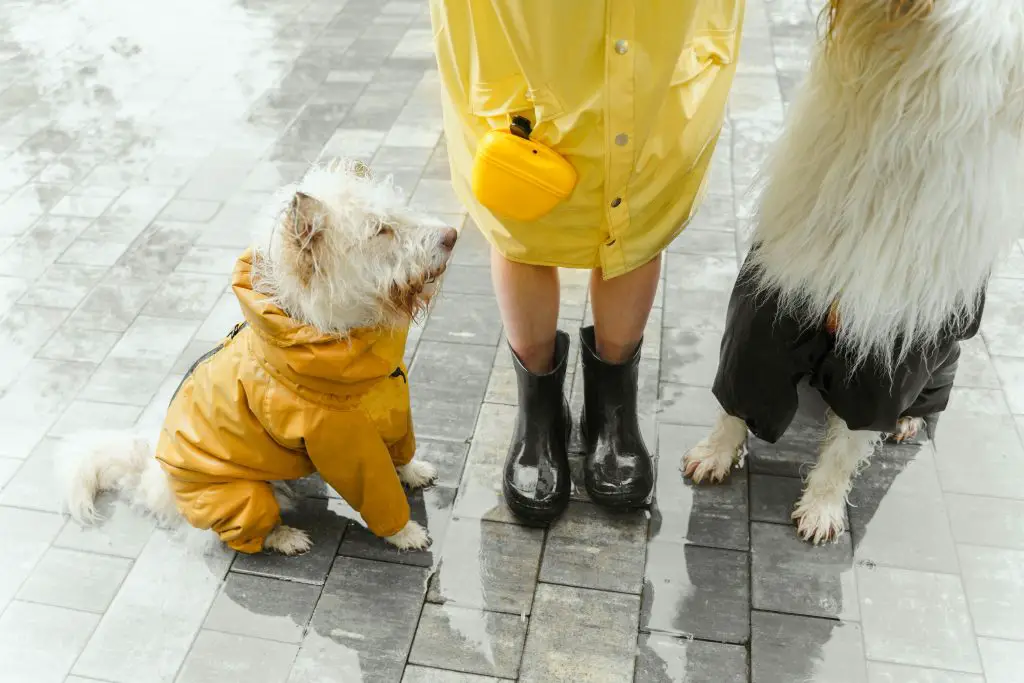
By using these scents, you can create a negative scent association with the couch, which aids in behavior modification. To implement this method, you’ll need to engage in olfactory training.
Spray or apply the selected scent on a cloth or directly onto the couch cushions.
Make sure the scent is strong but not harmful to your dog. Over time, your dog will associate the couch with the unpleasant smell, enhancing the deterrent effectiveness.
This makes the couch less inviting and encourages your dog to seek comfort elsewhere.
Monitor your dog’s reaction and reapply the scent regularly to maintain its strength. Consistency is key for successful behavior modification.
If your dog shows signs of distress or allergic reactions, discontinue use and consult your veterinarian for alternative solutions.
Combining scent-based repellents with positive reinforcement when your dog stays off the couch will yield the best results. This holistic approach ensures your dog learns to avoid the couch without experiencing undue stress.
Sound Aversion Techniques
After leveraging scent-based deterrents, consider employing sound aversion techniques to reinforce your dog’s understanding that the couch is off-limits.

Sound aversion is an effective behavior modification tool that utilizes sudden, unpleasant noises to deter unwanted behavior.
This method can be particularly useful in combination with other training methods to guarantee your dog learns to avoid the couch.
Here are some practical sound aversion techniques:
- Aluminum Foil: Place sheets of aluminum foil on the couch. When your dog jumps up, the crinkling noise will startle them, discouraging the behavior.
- Cans with Pennies: Fill a few empty cans with pennies and place them around the couch. When your dog jumps up, the cans will topple over and create a loud noise.
- Air Horn: Use a small air horn to emit a sharp sound whenever your dog attempts to get on the couch. Be careful not to overuse it to avoid causing undue stress.
- Pet-Safe Motion Detectors: These devices can emit a sound or spray a harmless burst of air when they detect your dog approaching the couch.
Training With Patience
Training your dog to stay off the couch requires patience, consistent command usage, and positive reinforcement techniques.
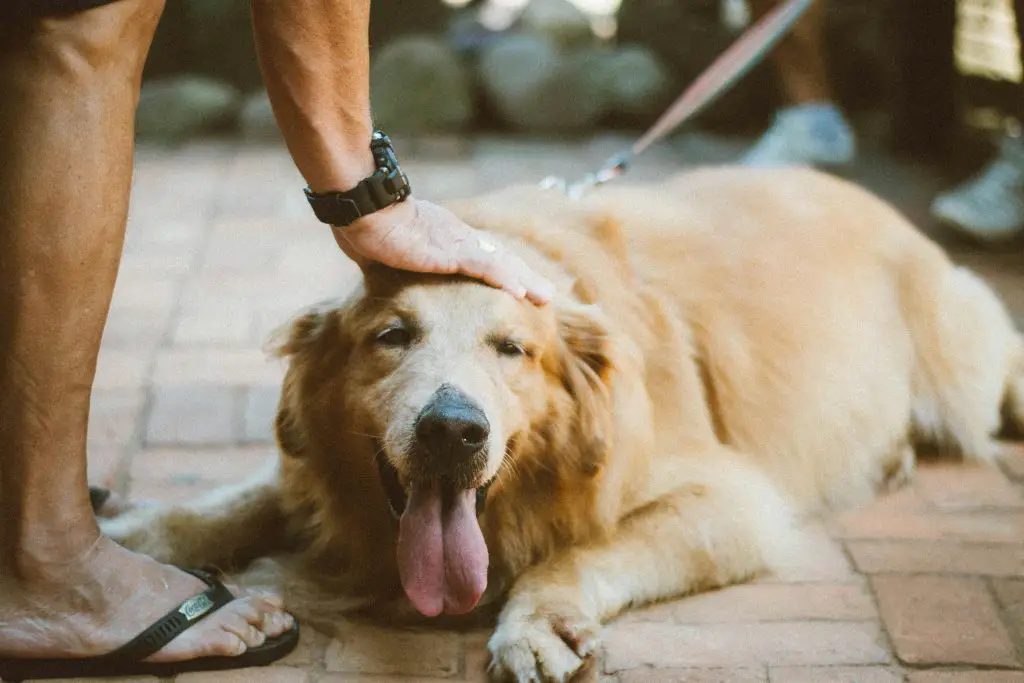
Use the same word or phrase every time you give a command to avoid confusion.
Reward your dog immediately when it responds correctly to reinforce good behavior.
Consistent Command Usage
To effectively train your dog to stay off the couch, consistently use the same command with patience and firmness. Choose a clear, simple command like ‘Off’ and stick to it.

Consistency helps your dog understand what’s expected. Pair your verbal command with body language cues, such as pointing to the floor or gently guiding them off the couch.
Your tone should be calm but firm. Dogs respond not only to words but to how they’re said. Maintain eye contact when giving the command to reinforce your intent.
Patience is essential; it may take time for your dog to understand and obey consistently.
Incorporate a reward system to reinforce positive behavior:
- Verbal praise: A simple ‘Good dog!’ when they obey.
- Treats: Small, healthy treats can be a powerful motivator.
- Affection: Petting or gentle scratches as a reward.
- Playtime: A favorite toy or game can act as a reward.
Positive Reinforcement Techniques
Building on the importance of consistent command usage, positive reinforcement techniques can accelerate your dog’s learning process while making training enjoyable for both of you.

Start by using treat rewards to create a positive association with staying off the couch. When your dog complies with your command to stay off the furniture, immediately reward them with a treat.
This reinforces good behavior and encourages repetition.
Incorporate clicker training for precise behavior modification. A clicker provides a consistent sound that marks the exact moment your dog follows your command. Pair this with treat rewards to solidify the positive association.
Monitoring Progress
Regularly tracking your dog’s behavior is essential to ensure they consistently stay off the couch. Monitoring progress and behavior changes helps you gauge the effectiveness of your training.
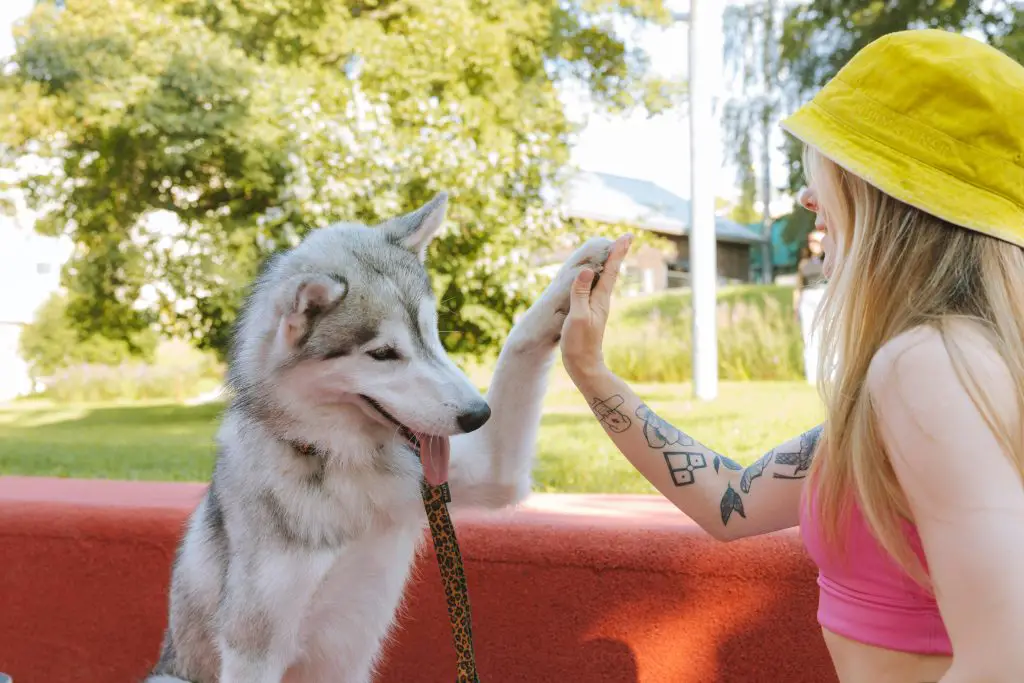
Keeping a journal or using a digital app to document your dog’s daily behavior is a useful way to track their improvement.
By observing their reactions to different training methods, you can make necessary adjustments to ensure ongoing success.
To effectively monitor your dog’s progress, follow these key steps:
- Daily Logs: Record your dog’s actions each day, noting any attempts to get on the couch and your response.
- Behavioral Patterns: Identify any trends, such as specific times or triggers that make your dog more inclined to climb on the couch.
- Training Adjustments: Be ready to modify your techniques if you find certain methods ineffective. Consistency and adaptability are crucial for successful training.
- Positive Reinforcement: Continue to promptly reward good behavior to reinforce the training and help your dog understand expectations.
Frequently Questions On Training Dogs to Stay Off the Couch

Yes, some breeds can be harder to train to stay off the couch. Breed differences affect behavior modification.
Use consistent training techniques. Consistency in training will help regardless of the breed’s stubbornness or tendency to climb.
You’ll typically see results in a few weeks with training consistency and patience. Behavioral modifications and rewards are essential.
Stay focused, and reinforce good behavior to make sure your dog learns to stay off the couch.
Think of preventing behavior like building a fortress. Use reinforcement techniques such as deterrent sprays or barriers.
Setting boundaries and consistency training are essential. Guarantee your dog knows the rules even when you’re not home.
Yes, frequent jumping on furniture can harm your dog’s joint health and lead to back problems.
Additionally, it compromises furniture protection and increases the need for frequent upholstery cleaning, impacting your home’s cleanliness and your dog’s well-being.
Involve your family by organizing family training sessions. This unified approach guarantees your dog gets the same message from all family members, speeding up the training process.
Make certain everyone uses consistent reinforcement with commands and rewards.
Conclusion

Just as you’re sipping your morning coffee, imagine your dog happily lounging on their cozy bed instead of the couch. Coincidence? Hardly. By understanding their behavior, setting boundaries, and using consistent commands, you’ve trained them well.
Positive reinforcement, alternative comfort spots, and occasional barriers have all played a part.
Remember, patience is key. With time and consistent effort, you’ll see the progress you’ve hoped for, and your couch will stay pet-free.






